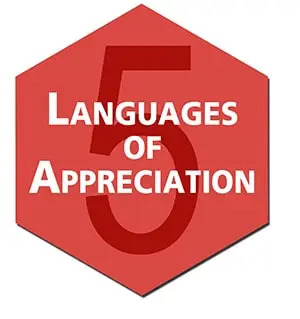At work, people express and receive appreciation in different ways. If you try to express appreciation in ways that aren’t meaningful to your co-workers, they may not feel valued at all. This is because you and your co-workers are speaking different languages.
To help you better understand how employees want to feel love and appreciated, we would like to introduce The Five Languages of Appreciation, a book written by Gary Chapman that explores the five ways people like to be appreciated in the workplace.
Quality Time
For those who appreciate quality time, they are looking to be connected in the workplace through authentic time set aside to work with others whether that be collaborative tasks or having different types of experiences together to deepen team relationships. Allowing for opportunities for “hang-outs” also encourages a quality time person.
Physical Touch
A person who feels appreciated by physical touch looks for appreciation through pats on backs, fist-bumps, and high-fives, which are all actions that are quite common between coworkers and are an important part of positive work-based relationships.
Gifts
In the workplace, gifts received by someone who feels the most appreciated through gifts cares more about the action and the thought behind what it given than the actual object.
Words of Affirmation
Written praise through email or texting is a powerful act of appreciation for those who seek appreciation in the act of words of affirmation. Words of affirmation can also be communicated through public recognition in team meetings, award ceremonies and in front of customers.
Acts of Services
Asking a coworker if they want assistance is one way to offer an act of service. Another way for coworkers to perform acts of service would be to pitch in on efforts that one may be struggling with and do the service in the way the recipient wants it done.
For more on The Five Languages of Appreciate in the Workplace, visit http://www.appreciationatwork.com/wp-content/uploads/2014/01/Difference-between-5LL-and-5LAW-FINAL-8-28-2011.pdf


